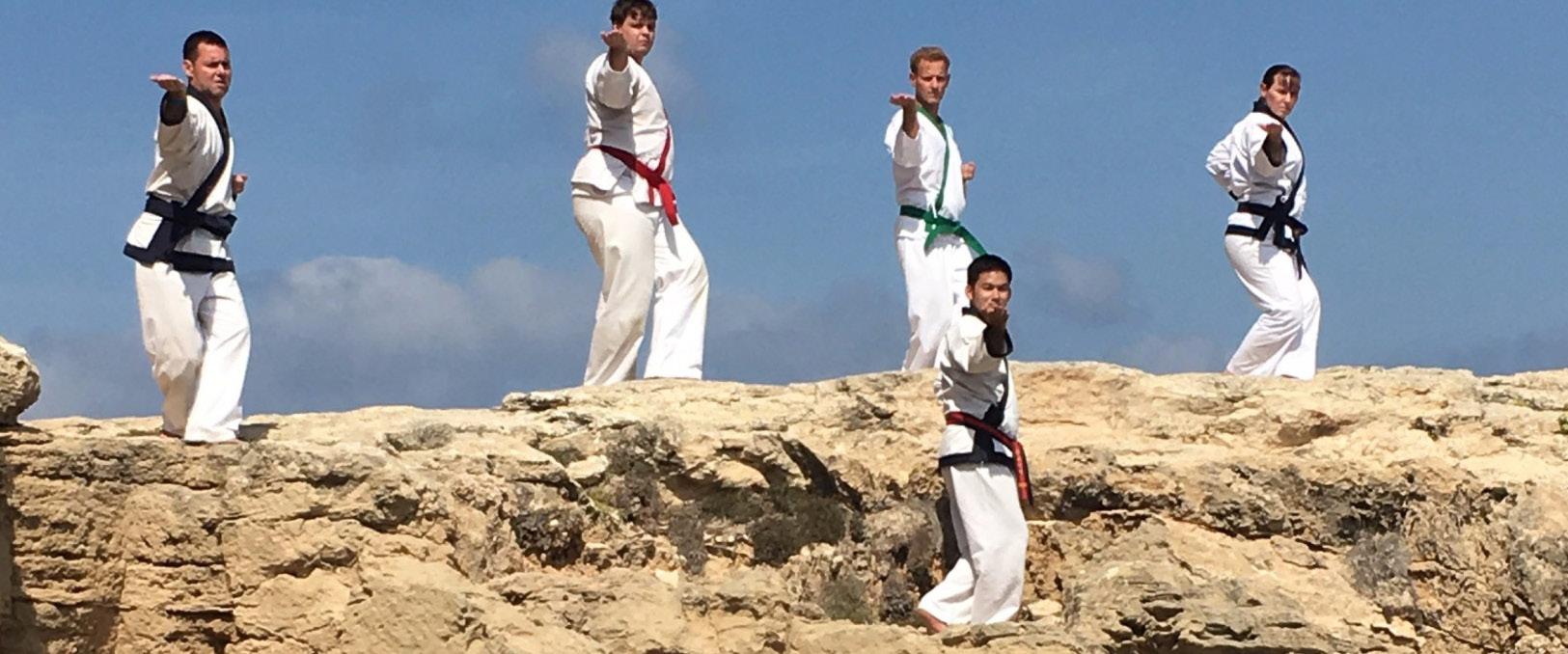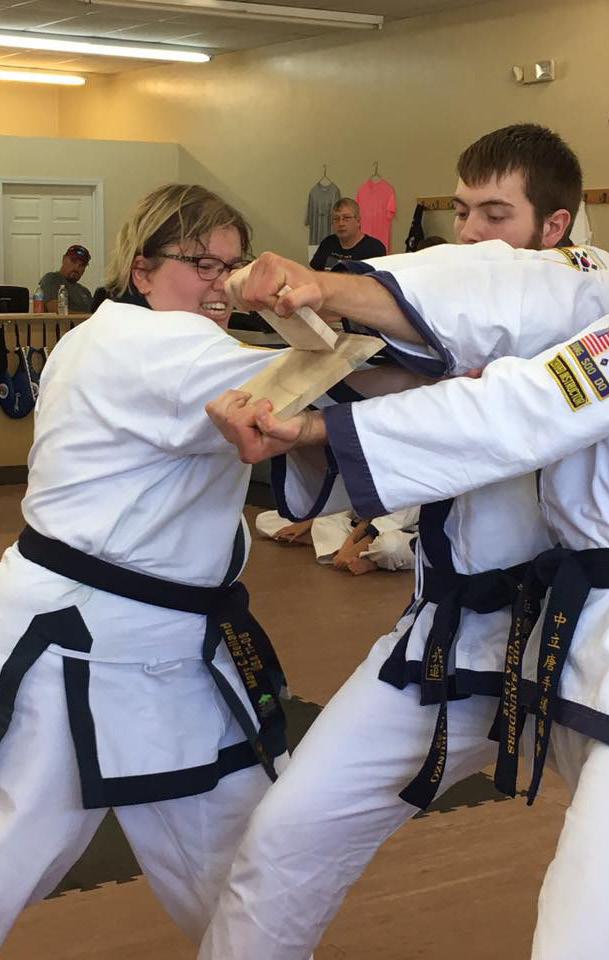
4 minute read
APPLICATIONS OF SOFT INTERNAL TECHNIQUES SBN Mary Cayte Reiland
Applications of Soft Internal Techniques
SBN Mary Cayte Reiland
Advertisement
Applications of Soft Internal Techniques SBN Mary Cayte Reiland, USA
In martial arts, we practice moves in one of two ways, either “Weh Ga Ru” (hard style) or “Neh Ga Ru” (soft style). Hard style techniques (i.e. punching, blocking, kicking) are the first type of technique each student learns, and the techniques most frequently practiced during class. Neh Ga Ru techniques are not introduced until a student is at least a red belt, and these moves are taught typically through the instruction of the Chil Sung and Bassai forms. Today, we are going to discuss the different moves and how they can be applied in self defense.
Before we get into technicalities, I will say one more thing. None of these answers are wrong, but neither are they the only answers. I researched these forms extensively when preparing this article, and in my research, I saw a lot of different applications. None of them are wrong, as they all contain the moves of the forms, but there are those that are better than others, and those are the applications I will be discussing today. first internal move we learn in Chil Sung Ee Ro Hyung. You begin by starting in a Sa Ko Rip Jaseh (back stance) with your arms crossed, hands open. From there, you move slowly into a Jung Gul Jaseh (front stance), uncross your arms, and in some instances, close your fists. When performed in the Neh Ga Ru style, this doesn’t look like a gigantic movement; however, with practice and time (and a little out-of-the-box thinking, you would eventually learn what this move really is.
Consider this scenario. If you were faced off with someone, and you found yourself in the clinch position, with your opponent in your face, trying to overpower you. How simple would it be to grab ahold of your opponent’s clothing, crossing your arms as before, and then pull, trying to uncross your arms? This would easily choke your opponent, and force him/her to let go of you, giving you time to get away. Also consider what comes after the internal move in Chil Sung Ee Ro… a front kick. Thinking more liberally about applying this, you most definitely wouldn’t have enough space to front kick your opponent while choking them, but you can perform the first part of a front kick… a knee strike, directly to the groin. Speaking as a woman, trust me, this strike hurts no matter what gender you identify with.
Now we will look more closely at Chil Sung Il Ro Hyung, where we have even more internal moves. Consider the first move of the form. We begin in a back stance, your front hand high, and your back arm low, but both at the sides of your body. Moving into front stance, we perform the move known as “hugging the tree”, where your arms move in front of your body, with your back arm flipping over so your palm faces the ground.
I’ll say it again here, this move doesn’t look like much when you perform it in the form, it may even leave you scratching your head a little, as it did for me when I first learned it. How could I possibly apply this movement? Well, here’s an answer. Consider if you’re squaring off with your opponent in a fighting stance, and this person attacks you with a front kick. First, you get out of the way by moving to the side of your opponent’s leg into back stance, your back arm moves out to your side, and your front arm moves out to your other side. Using this move, you catch your opponent’s leg mid air with your back arm, and maneuver your front arm to push at your opponent, so their stance is unsteady. Then, performing the move in a Weh Ga Ru style, your back arm moves to the front, and fips over. Doing this forces your opponent on to the ground, where if untrained, your opponent would hit his/her head, and be knocked out.
Let’s discuss another movement from Chil Sung Il Ro, the last move, which also occurs in other Chil Sung forms, so we know


it’s important, but why? This move starts in front stance, with your arms out in front of you, palms facing downward. You then drop your weight, coming up on the heel of your front foot, moving your hands to your sides (by your kidneys), then moving upwards, pushing outward. The instructor who taught me this form referred to this move as “the kidney push”.
Applying this move is simple, and much much easier than the move in the form. In what way? You don’t have to drop all the way to the ground, and you don’t have to balance on your heel either. If any of you reading this have ever seen the Karate Kid remake with Jaden Smith and Jackie Chan, you know this move. It’s the move that Jackie Chan teaches Jaden that he calls “hanging up your jacket with attitude”. Basically, you shift your hips backward, then forward while striking your opponent square in the chest.

I love studying the Chil Sung forms, they give you an opportunity to learn different moves, both in the Weh Ga Ru and Neh Ga Ru styles. As I continue my studies, I should have more to share on this subject, but again, all you need is a little imagination to apply these forms in any situation. Just remember, no answers are wrong, just some are better than others. Expand your mind, take care, and until next month. Tang Soo!










